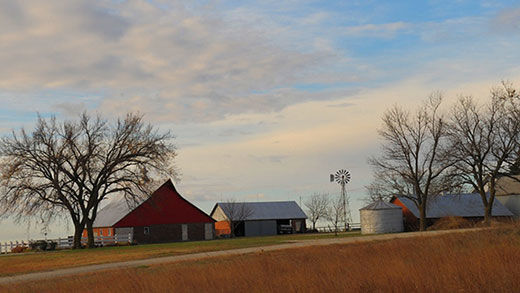Farm financial conditions trend weaker again
Based on the Economic Research Service’s latest farm income forecast, 2018 will not be the year the farm income situation improves. Farm income has now been in general decline for four years and seems to be headed for a fifth in 2019. While the farm sector went into this period in excellent financial health, the downturn has clearly started to take a toll.
United States farm debt now stands near record inflation adjusted levels with real-estate debt leading the way higher. We have also discussed how working capital levels in the sector have dropped dramatically.
Given these trends we wanted to examine a few more indicators of financial condition. The measures that we will examine here are calculated at the sector level so we note the usual caveat about individual conditions varying from the aggregate data. Although not calculated at the farm level, these measures usually provide a good indication of the general trends at the farm level.
Liquidity measures drop sharply
The most apparent declines in financial condition are quickly observed in measures of liquidity. For instance, the current ratio, which measures the magnitude of current assets relative to current liabilities, now stands at less than 1.5. However, the magnitude of the decrease is notable. In 2012, current assets were nearly three times the magnitude of current liabilities, so this measure has declined by 50 percent in six years.
The general decline in liquidity can also be seen by examining the ratio of working capital (current assets less current liabilities) to gross revenue. Today, working capital amounts to 12 percent of gross revenues. As was the case with the current ratio, this is by far the lowest level seen since 2009.
The appropriate level of working capital and adequacy of the liquidity situation is open to debate, however, it is absolutely clear that liquidity levels have fallen quickly and considerably. Given these two measures, it is likely that liquidity is becoming a serious issue for a number of farms.
The dramatic decline in farm profitability is one of the primary reasons that liquidity has dropped so quickly. There are numerous reasons for this drop, but most come back to the factors that have caused a decline in farm revenue and an improved, but still high farm cost structure.
Today, operating expenses account for 71 percent of farm revenues. The operating expense ratio has been this high before (2009 and 1999), but it is clear that operating expenses are consuming a large share of gross revenues.
The combination of operating expenses consuming a greater proportion of revenues and revenues declining is very undesirable. In other words, operating expenses are grabbing a bigger slice of a shrinking pie. The result is that there is less left over to cover interest expenses and capital consumption.
Repayment measures suffer
Given the increases in the overall debt level in the sector and the current trend toward increasing interest rates, it will be critical to monitor measures of repayment capacity. The times interest earned ratio is calculated by dividing net farm income plus interest payments by interest payments.
This measure is best understood as a way of saying how comfortably net income covers interest payments. As with the other measures, this ratio is currently at its most unfavorable level since the 1980s.
The debt service ratio gives another view on repayment capacity. It is calculated as the ratio of interest and principal payments to the value of farm production.
In other words what proportion of the value of farm production is consumed by interest and debt payments. This ratio is also at its most unfavorable value since 2002 and before that the mid-1980s. Today 28 percent of the value of farm production is accounted for by interest and principal payments.
Keep in mind that operating expenses accounted for 71 percent of the value of farm production. When you combine this with 28 percent going to interest and principle payments, 99 percent of the value of farm production is accounted for.
This means that funds to cover capital consumption and family living are not internally available. This makes it unsurprising that debt levels have continued to increase.
Wrapping it up
Sign up for HPJ Insights
Our weekly newsletter delivers the latest news straight to your inbox including breaking news, our exclusive columns and much more.
To date, the farm economy has held up relatively well in the face of a roughly 50 percent drop in farm incomes. However, the length of this downturn is starting to take its toll on the sector’s financial condition. With farm debt standing at near record inflation adjusted levels, most measures of liquidity and repayment capacity have continued to decline and are approaching some of the most undesirable levels in decades.
It is difficult to find a silver lining in the numbers. However, it is also important to remember that these are sector level trends and that individual farm financial conditions can and will vary from the indicators shown here. Undoubtedly there are farms that are doing quite well in this economy, but there are also many that are likely struggling.
Given the levels of the indicators that are examined above, it is clearly time for farm managers to carefully manage their finances. An upturn in the ag economy would certainly be welcome and would allow farmers to start to rebuild working capital and improve repayment capacity.


